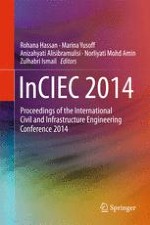2015 | OriginalPaper | Buchkapitel
Ventilation Performance Assessment of an Educational Building in a Hot and Humid Climate
verfasst von : Maisarah Ali, Majeed Oladokun, Samsul Baharin Osman, Niza Samsuddin, Hairul Aini Hamzah, Md Noor Salleh
Erschienen in: InCIEC 2014
Verlag: Springer Singapore
Aktivieren Sie unsere intelligente Suche, um passende Fachinhalte oder Patente zu finden.
Wählen Sie Textabschnitte aus um mit Künstlicher Intelligenz passenden Patente zu finden. powered by
Markieren Sie Textabschnitte, um KI-gestützt weitere passende Inhalte zu finden. powered by
